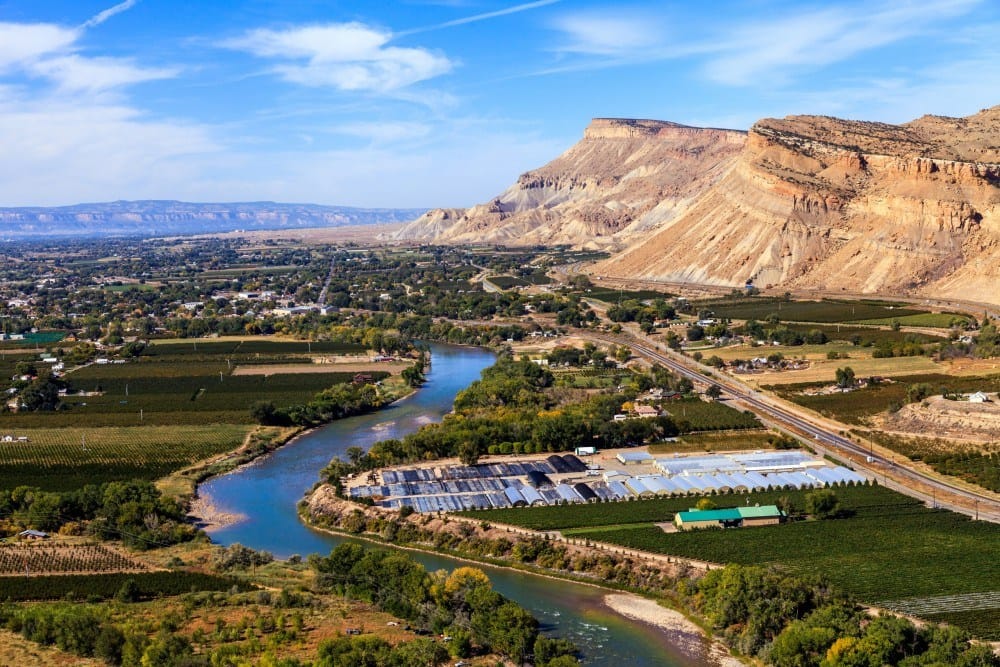The transformation of Grand Junction, Colorado over the last decade is an incredible case study
Originally published by Colorado Biz magazine on August 30, 2021
The transformation of Grand Junction, Colorado over the last decade is an incredible case study in rural economic development. At the bottom of the recession, the community grappled with 11% unemployment, which resulted in high crime and poverty rates and significant loss of workforce-aged population.
A decade later, Grand Junction is thriving despite a global pandemic, with the most diversified economy in its history, a number of successful workforce development programs to support local industries, and a quality of life and cost of doing business that is drawing industries such as tech and cybersecurity from larger, more urban areas of the country.
Here are 5 takeaways from Grand Junction’s turnaround that can be replicated in any community:
- Collaboration Matters. Economic Development is a team sport. In 2015, leadership across Mesa County, where Grand Junction is the main seat, conducted an economic development feasibility study. The robust report became the community’s economic development “bible” and everybody joined together to accomplish the recommendations. Collaboration became the lifeblood of the work, bringing all partners to the table to tackle the complicated work of economic development, which included education, workforce development and training, commercial real estate, transportation, and robust business services. Local elected officials were integral to policy recommendations and changes both at the local and state level. That collaboration later merged into problem-solving for the pandemic through the development of an Economic Development First Responders’ Group that kept schools and businesses open while protecting our most vulnerable.
- Size Matters. The biggest challenge in rural economic development is scale. Rural communities have smaller budgets, smaller populations, less resources, less opportunities, less competition to reduce pricing on services and, most importantly, they have less representation and therefore a smaller voice in state and federal policy decisions. Economic development policies and programs are geared toward large, urban areas and don’t translate well to small, rural communities. Leadership from western Colorado came together and created, with the help of the legislature, the Rural Jump-Start Program, which is the first program that truly caters to the type of companies that will fit in rural communities. Twenty Rural Jump-Start companies later, Grand Junction is more diversified than ever with the help of that program.
- Quality of Life Matters. If we learned anything in the pandemic, it was that as long as you have reliable and affordable internet, a lot of people can live wherever they want. And this is one area where rural communities thrived over the past year – attracting families and businesses from densely-populated areas who were searching for a better quality of life. Rural communities have that in spades, as they are usually more affordable, friendlier and safer. In Grand Junction, we made huge investments in quality-of-life amenities, such as a riverfront park, and passed multiple tax measures to put more money into our schools, roads, public safety and increased air service. And it has worked. Our population continues to grow as people flee large, urban areas for what we have to offer.
- Make Your Voice Matter. The squeaky wheel gets the grease. But I would argue that you squawk, not squeak. Being a loud voice to force needed change is a requirement in rural economic development. Rural voices are often drowned out by the density of the I-25 corridor. Legislation, rule-making, policy development and budget are urban-focused and often leave rural communities to fend for themselves. Legacy industries based in rural Colorado such as energy and agriculture are misunderstood by their largest consumers because of the physical and cultural divide that exists in Colorado between our rural and urban communities. As a result, rural communities need to band together to speak with one voice and to speak loudly. The investment required to travel and appear in person to make rural issues known to policy-makers is significant, but vitally important. And, the more we can band together as regions to speak with a louder voice on important issues, the better.
- Vision Matters. A common vision for a strong and diverse economy shared across community stakeholders and community members is required if you want to grow in a manageable and sustainable way. What we’ve historically found in our vision-setting process is that we set our expectations too low and achieve our vision sooner than expected. I would challenge rural communities to have an audacious vision that almost seems impossible – and go for it. Five years ago, the idea of a tech community in Grand Junction was laughable at best. Today, it’s our fastest-growing industry. Reach for the stars.
As we grow and diversify, Grand Junction has developed new challenges that we couldn’t have imagined before, such as our current shortage of attainable housing. However, when you’ve pulled yourself up and out of 11% unemployment and outperform economic metrics you never thought you’d reach, you realize that there are few problems that are truly unsolvable. And so, in Grand Junction, we will continue to do what we do best: tackle each problem as it comes, in order to grow into the best community that we can be.
~ by Robin Brown, former GJEP Executive Director
Photo credit: Colorado Biz


Recent Comments